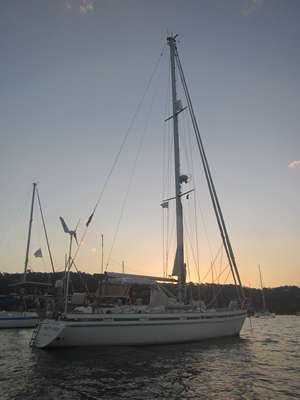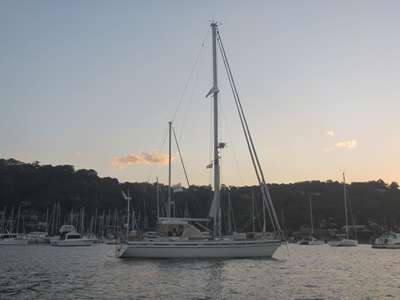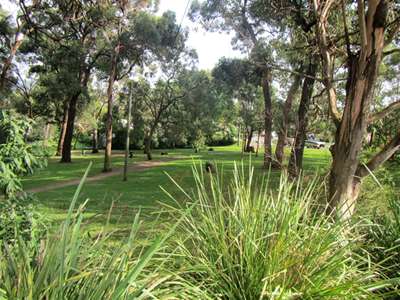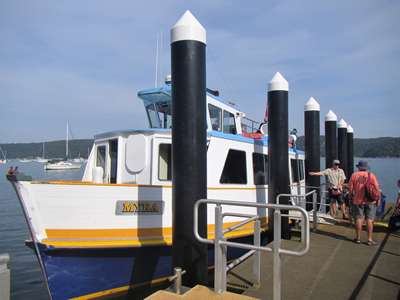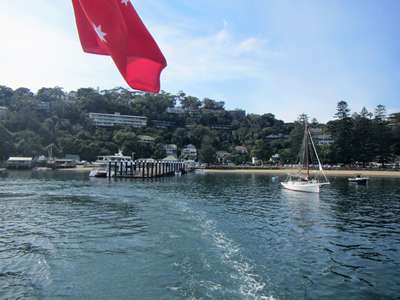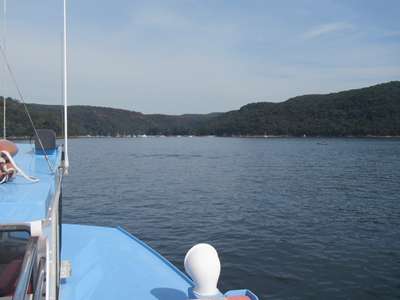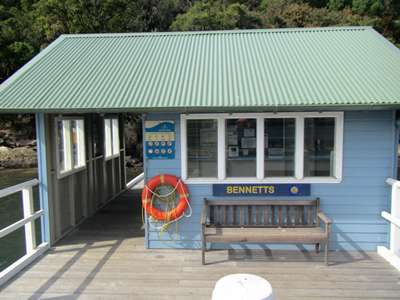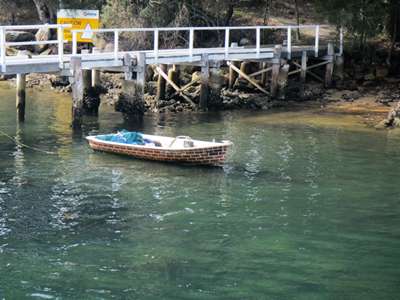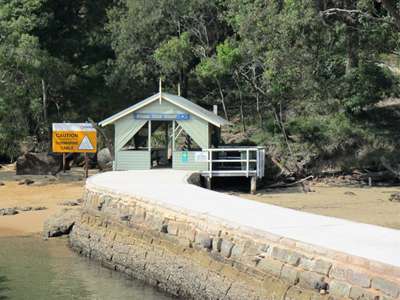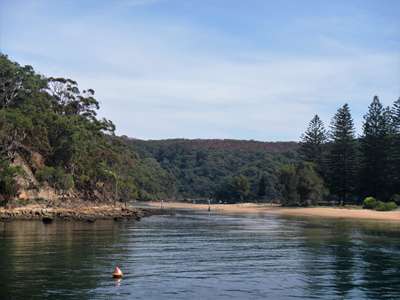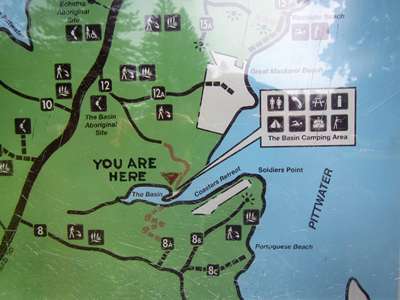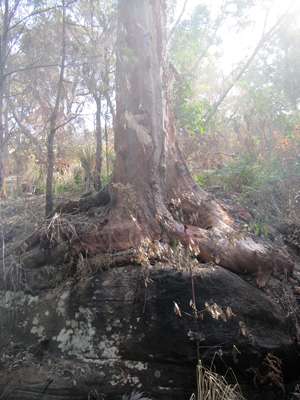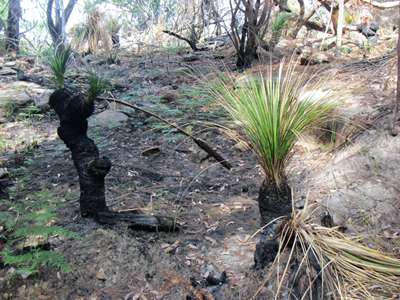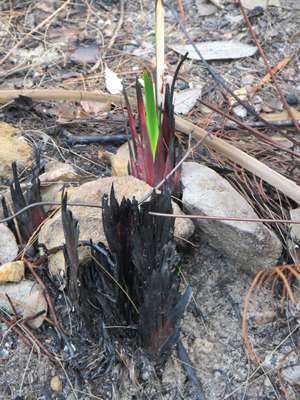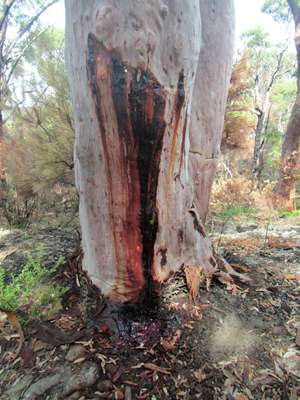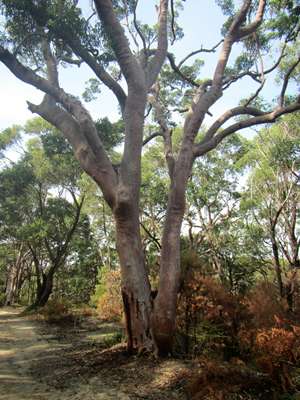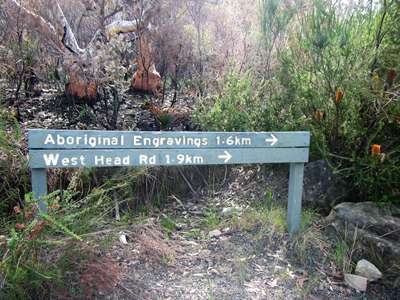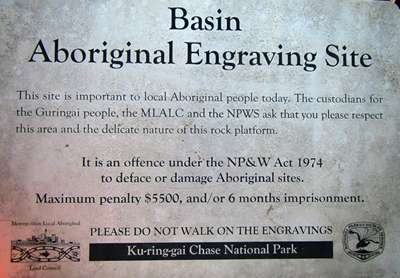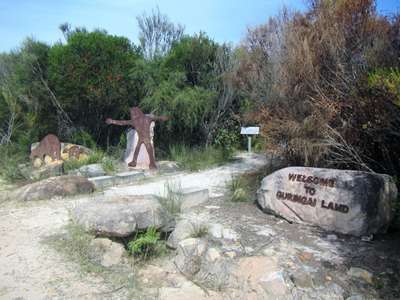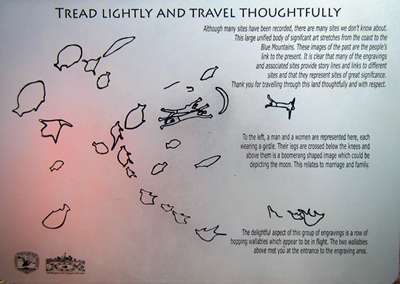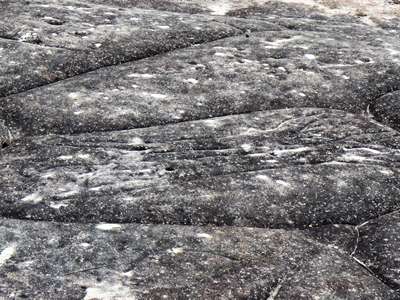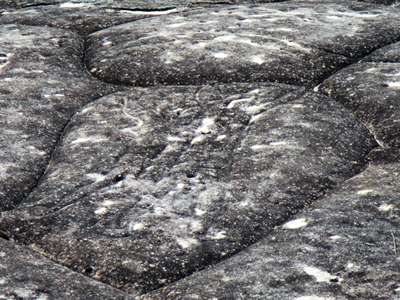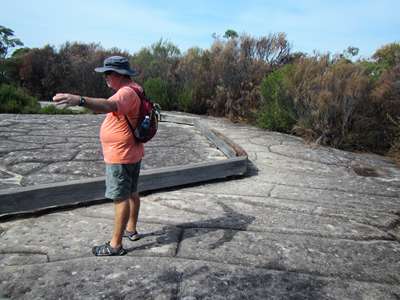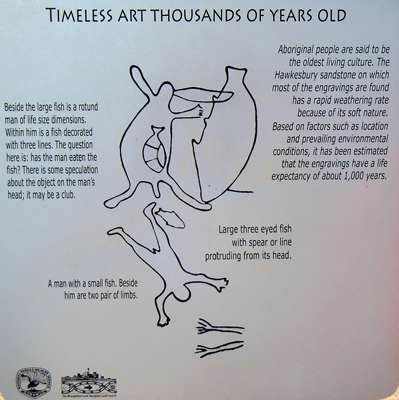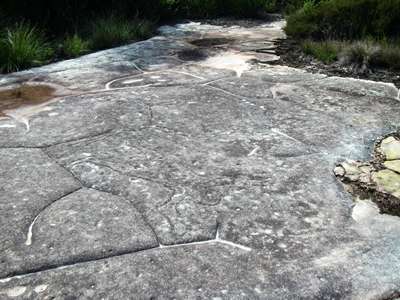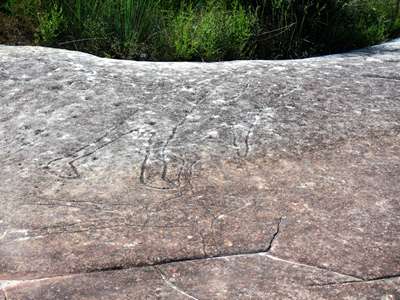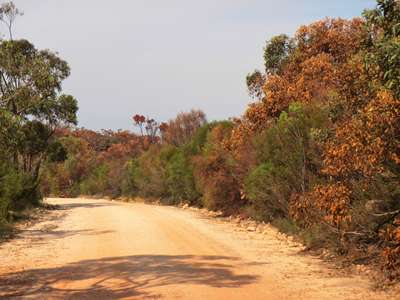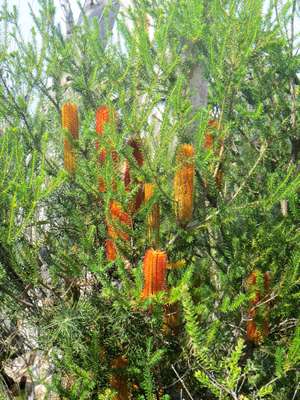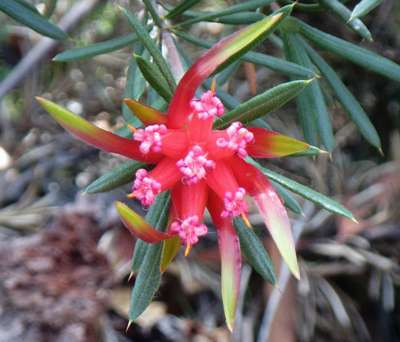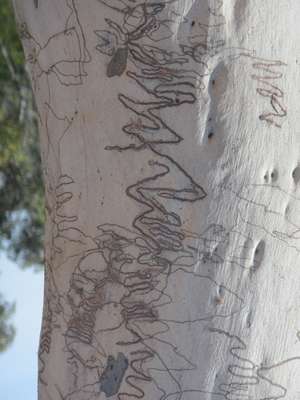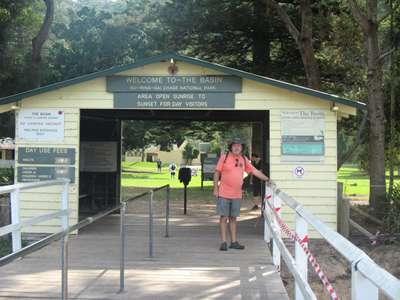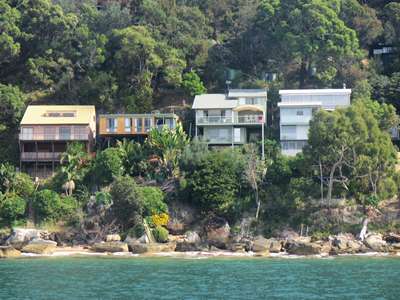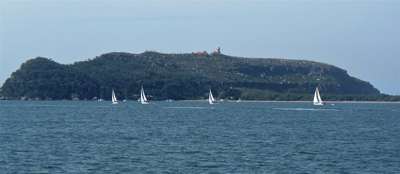Rock carvings, Ku-ring-gai Chase NP

|
Saturday 16th April 2016 We have been back at the boat for two weeks, and are still
in Pittwater. All was well with the boat, and for the first week we took
it easy, doing a couple of jobs a day as we got used to life afloat
again. We found a picture framer in Mona Vale, and popped down there on
the bus with our print. A few days later he called to say it was ready,
and our Superb Fairy Wren is now looking splendid on the wall in the saloon.
Scott-Free was waiting patiently on her buoy for us to
return. All was well with only a tiny bit of bird poo on deck!
Our Superb Fairy Wren now at home in the saloon. When we began to feel that it was time to think about moving
the boat north, we started looking at the weather and Steve did his usual
checks on the engine. All looked fine apart from a small puddle of
coolant-coloured water underneath. We have noticed this on a few occasions
in the past but have not been able to trace the source. Steve changed the
impellor in the raw water pump, and then fired the engine up and, yes, she
started first time. Wonderful! Unfortunately, as the engine warmed up, the little puddle of
water underneath began to get bigger. Steve was able to track the source
to the elbow that connects the thermostat housing to the heat exchanger.
It seems to be a seal that’s shot, but the position of the leak means
that important bits of the engine need to be removed in order to get at it and
change it. Not a job that Steve was willing to tackle, so we asked around
for recommendations for a Volvo mechanic. The first guys couldn’t even look at it till the
middle of next week, and the second guys hoped to get to it by the end of this
week. They came and looked at it yesterday, and we are now on their
joblist for Monday, so at least we know something will happen soon. Just
as well because our feet are itching... Meanwhile, we have been wanting to see the Aboriginal rock
carvings in the nearby Ku-ring-gai Chase National Park since we arrived here in
January, and had thought we might anchor in a nearby bay and visit from there
on our way out of Pittwater. But as we are staying here longer than
expected, we decided to do it now instead. From here we need to catch the
bus to Palm Beach and then the ferry across Pittwater to the opposite shore at
The Basin, from where we can walk the Basin Track to the rock carvings. Having checked the weather forecast and the bus and ferry
timetables, we set off ashore in the dinghy at nine this morning and got off
the ferry at The Basin wharf an hour and a half later.
This chap seems to have lost his roll of lino... We
walk through this little park by the marina to the bus stop.
The ferry boat ‘Myrna’ was at the wharf when
we arrived. Half-price for seniors, so $7 return for us both.
Heading across the flat waters of Pittwater to Coasters
Retreat Bay. First stop on the south side
of the bay – Bennetts.
This amused me – a brick-patterned dinghy. Second
stop near the head of the bay – Bonnie Doon wharf.
The sheltered pool at the head of the bay – The
Basin We disembarked and at the wharf shelter paid the Ranger our
$3 each National Park fees, then headed for the information board to work out
which direction we needed to go. A quick stop at the loo and we were off
– up a VERY steep track! If this was a ‘moderate’
track, I’d hate to be walking up a ‘steep’ one! The
sign at the bottom of the track said 2.3 km to the rock engravings, and it was
nearly all up. We took it at a sedate pace as befits a couple of
sexagenarians, and stopped to look at the views at regular intervals.
The information board showed all the park tracks. The
Aboriginal rock carvings are at number 12.
Trees appear to grow straight out of rock. Was
there water here in the past to cause this erosion?
Fire-damaged plants showing re-growth.
The bark of this tree has somehow been cut, and dark
resin has bled from it. No wonder they burn so readily.
This rock looked like a huge yawning mouth. 0.7
km done (felt like more), 1.6 km left to go, hopefully not so steep! The track levelled off as we neared the site of the
rock carvings. There was good signage and explanation that the site is
significant to the local Aboriginal people and should be treated with respect.
The engravings were fenced off and at first difficult to make out. I took
a few photos, but really needed to capture them from above. Perhaps a
viewing platform would help.
The diagrams helped us find the engravings which were
difficult to pick out at first. This one is a fish.
Two people side by side. Again,
from a different angle.
The engravings were made using a pointed rock. Steve
demonstrates how they may have used someone to make a shadow to cut around.
These were too far away to see clearly, but the lower
figure’s head and arms are visible.
The group of three figures is visible in the photo to the
right, the lower figure much fainter than the higher ones.
The bottom most figure from the group depicted above. It is not known how old the engravings are, but it is estimated
that they would last for about a thousand years, so must be less than
this. Every so often the lichen is removed from around them to make them
more visible, but eventually the elements will take their toll and they will
disappear. One wonders whether they would endure longer inside a
protective enclosure, but perhaps tradition dictates that they must be left as
they are. It would be a pity, though, to lose such evidence of the
indigenous people who once lived on this land. Having made out as many of the engravings as we could, and
with the mid-day sun now beating down on us, we started back along the track.
The trees looked almost autumnal in the sunlight, but the colour change is a
result of bush fire, not a seasonal one. Many of the trees will not
re-grow in the spring. We were fascinated with the apparently selective
nature of fire, even within a single tree, where burnt branches stand next to
untouched ones.
Untouched branches next to burnt ones. Almost autumnal. Evidence
of fire damage over a large area.
A Banksia with orange flowers? What
is this pretty little red flower?
A scribbly gum tree – the scribbles are made by
moth larvae. We arrived back at the wharf ten minutes after the ferry had
docked, and fifty minutes until it would be back, so we went for a stroll under
the trees along the water’s edge and sat on the grass watching the
families enjoying the beautiful weather. Well, I watched, Steve dropped
off to sleep. Back at the wharf, the ferry arrived on time, and we enjoyed
the rest of its circular route back to Palm Beach, where we tucked into a late
lunch of fish and chips.
Back at the wharf for the return ferry trip.
We wondered how you access these houses in Mackarel Bay.
Almost back at Palm Beach – Barrenjoey Head &
lighthouse |
